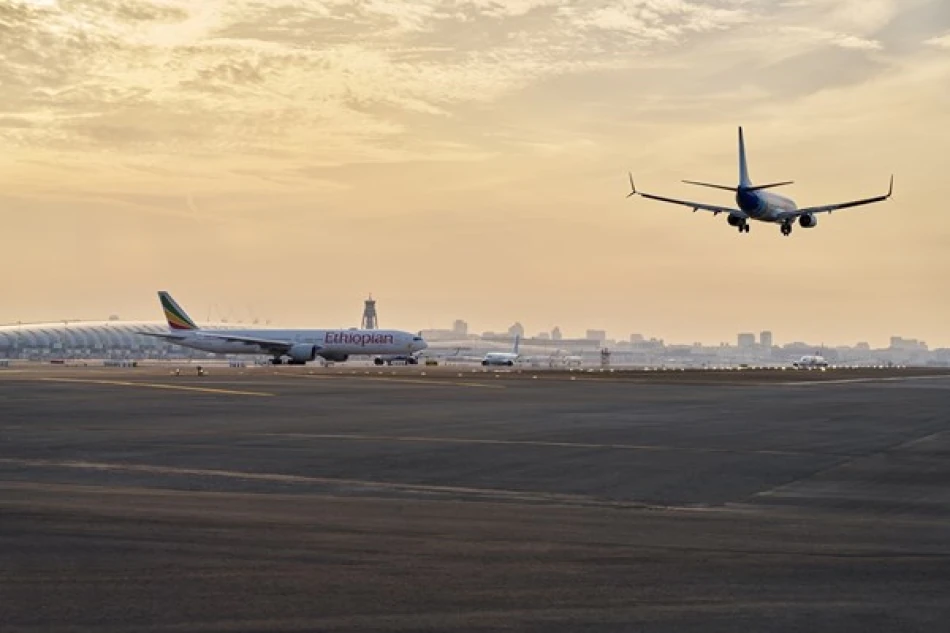
Dubai Airport Records Highest Passenger Traffic in Its History During the First Half
Dubai International Airport Smashes Records as Middle East Aviation Hub Proves Unstoppable
Dubai International Airport has cemented its position as the world's busiest international hub by handling 46 million passengers in the first half of 2025—a historic high that underscores the emirate's resilience amid regional turbulence. Despite airspace disruptions in May and June, the airport achieved 2.3% growth, signaling that Dubai's aviation strategy is paying dividends while competitors struggle with capacity constraints and geopolitical headwinds.
Record-Breaking Performance Defies Regional Challenges
The 46 million passenger milestone represents more than just impressive numbers—it demonstrates Dubai's ability to maintain operational excellence during periods of regional instability. The second quarter alone saw 22.5 million travelers, with April setting a new monthly record of 8 million passengers across all terminals.
This performance is particularly striking given the temporary airspace restrictions that affected regional aviation during late spring. While other Middle Eastern airports faced significant disruptions, Dubai's diversified route network and operational flexibility allowed it to maintain momentum.
Operational Excellence Sets Global Standards
Behind the passenger numbers lies a logistics operation that outperforms global benchmarks. The airport processed 41.8 million bags with 91% delivered within 45 minutes of arrival—a feat that puts most international airports to shame. More impressively, Dubai recorded just 2 lost bags per 1,000 passengers, compared to the global average of 6.3 bags according to SITA data.
Immigration processing times further highlight Dubai's efficiency advantage: 99.2% of departing passengers cleared passport control in under 10 minutes, while 98.4% of arrivals completed formalities within 15 minutes. These metrics matter enormously for business travelers and transit passengers who drive premium revenue.
Strategic Route Network Drives Competitive Advantage
Dubai's passenger mix reveals the airport's strategic positioning as a bridge between East and West. India remains the top destination with 5.9 million passengers, followed by Saudi Arabia (3.6 million), the UK (3 million), Pakistan (2.1 million), and the US (1.6 million).
This geographic diversification provides crucial resilience against regional economic downturns or travel restrictions. Unlike airports heavily dependent on single markets, Dubai's spread across multiple continents and economic zones creates natural hedging against localized disruptions.
London and Riyadh Lead City Destinations
Among individual cities, London topped the list with 1.8 million passengers, followed by Riyadh (1.5 million), Mumbai (1.2 million), and Jeddah and Delhi (1.1 million each). Istanbul rounded out the top destinations with 982,000 passengers—a telling indicator of how Dubai competes directly with Turkey's own hub ambitions.
Cargo Operations Maintain Steady Growth
While passenger traffic grabbed headlines, Dubai's cargo operations handled over 1 million tons of freight—a modest 0.1% increase that reflects the challenging global trade environment. However, maintaining cargo volumes during a period of supply chain restructuring and trade tensions demonstrates the airport's embedded role in global logistics networks.
The airport now connects 269 destinations across 107 countries through 92 international carriers, creating network effects that are increasingly difficult for competitors to replicate.
Market Implications and Future Outlook
Paul Griffiths, CEO of Dubai Airports, projects 96 million passengers by year-end, positioning the airport within striking distance of the symbolic 100 million passenger threshold. This trajectory has significant implications for aviation investors and regional competitors.
Competitive Pressure on Regional Hubs
Dubai's continued growth intensifies pressure on competing Middle Eastern hubs like Qatar's Hamad International and Abu Dhabi International. While these airports have expanded rapidly, Dubai's first-mover advantage and established network effects create formidable barriers to market share gains.
The upcoming Dubai Airshow 2025 will likely showcase this competitive dynamic, as airlines and manufacturers use the event to signal their Middle East strategies. Dubai's passenger volumes give it considerable leverage in aircraft procurement and route negotiations.
Infrastructure Investment Pays Dividends
The record performance validates Dubai's massive infrastructure investments over the past decade. Unlike airports that struggle with capacity constraints, Dubai's proactive expansion has created operational breathing room that translates directly into passenger experience and airline efficiency.
For global aviation investors, Dubai's model demonstrates how strategic infrastructure spending, combined with business-friendly policies and geographic advantages, can create sustainable competitive moats in the increasingly competitive hub airport market.
Most Viewed News

 Layla Al Mansoori
Layla Al Mansoori






